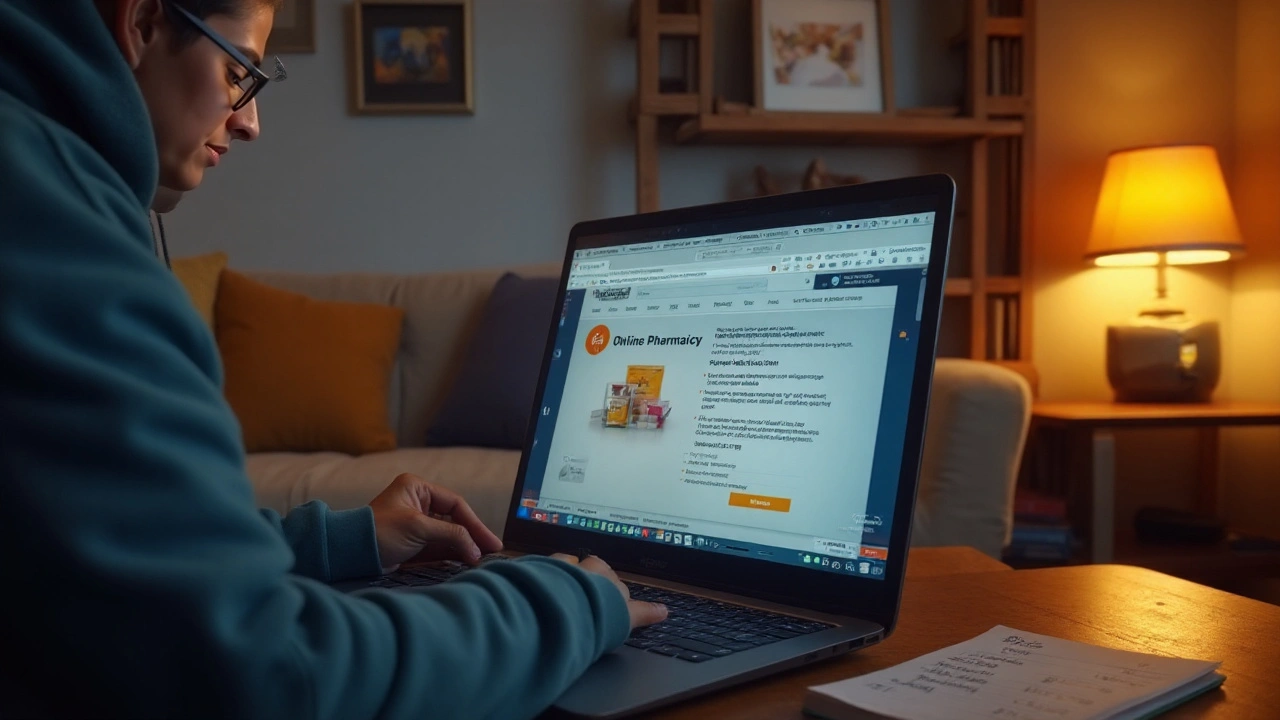
You want fast, reliable heartburn relief without paying silly money or getting stung by a sketchy website. Here’s the safe, realistic way to buy generic Prilosec online (omeprazole), what price counts as a good deal in 2025, how to check a pharmacy’s legitimacy in under two minutes, and when another option might suit you better. I’m writing this from Auckland, where online prices are all over the map. My rule is simple: buy smart, buy safe, and don’t waste a week waiting for the wrong thing to arrive.
What you’re actually buying: generic Prilosec = omeprazole
Prilosec is the brand name for omeprazole, a proton pump inhibitor (PPI). It turns down your stomach’s acid production so the lining can heal and the burn backs off. Most people use it for frequent heartburn and reflux symptoms. It’s also used (by prescription) for GERD, erosive esophagitis, H. pylori combination therapy, and other high-acid conditions.
Forms you’ll see online in 2025:
- Delayed-release capsules or tablets: 10 mg, 20 mg, 40 mg
- Oral suspension packets (usually prescription)
Region realities:
- United States: 20 mg omeprazole is sold over the counter (OTC). Packs are usually 14 or 42 doses. Labels say one 14-day course, and don’t repeat more often than every 4 months unless advised by a clinician (per FDA Drug Facts).
- United Kingdom: Omeprazole often requires a pharmacist consultation or prescription, though some lower-dose packs may be supplied by pharmacies after a check.
- New Zealand: Smaller packs are commonly supplied by a pharmacist; higher doses and longer courses are prescription-only (per Medsafe scheduling). Ask the pharmacist; they’ll tell you what you can buy today.
- Australia: Similar to NZ-PPIs are Pharmacist Only for short-term use; prescriptions are needed for higher doses/longer use.
What to expect when it works: symptom easing can start day 1, but peak effect often takes 2-4 days. That’s normal for PPIs. If you need instant relief tonight, add an antacid like calcium carbonate or consider a night-time H2 blocker (famotidine) short-term while omeprazole ramps up.
Common self-care dosing (always follow the label you buy):
- Frequent heartburn (adults): 20 mg once daily, 30-60 minutes before the same meal, for 14 days. Don’t crush or chew delayed-release tablets/capsules.
- If symptoms persist beyond 14 days, or keep returning within weeks, get medical advice. You might need a different plan or evaluation for alarm features.
Why "generic" is fine: regulators like the FDA, EMA, and Medsafe require generics to match the brand for quality, strength, and bioequivalence. In plain English: it has the same active ingredient and acid control. Fancy coatings and capsule colors can differ; the acid suppression should not.
Quick personal tip: when I have a reflux flare (usually after a rugby night feed with too much pizza), I start the 20 mg morning dose and keep antacids on hand for the first few days. My spouse Nina is the sensible one-she’s the first to point out when I’m pushing spicy food too far.
How to get the lowest safe price online (without getting scammed)
If a site promises prescription-strength PPIs with no prescription, ships worldwide for free, and charges pennies, it’s a red flag. You can still pay less-just do the following checks and price math.
Two-minute pharmacy safety check:
- License: Is the pharmacy clearly licensed in its country (e.g., NABP-accredited/VIPPS in the US, GPhC-registered in the UK, Medsafe/Pharmacy Council registration in NZ)? The logo/registration number should be visible and verifiable.
- Real pharmacist: There should be a way to contact a pharmacist with a name and hours. Email-only with no hours is a warning sign.
- Right questions: If the product is pharmacist-supplied, the site should ask about your symptoms, duration, other meds, and red flags. No questions at all = not good.
- Normal packaging: Photos and descriptions should match known brands/generics, with batch number and expiry listed on the box.
- Normal claims: Avoid sites shouting “no prescription needed” for products that are prescription-only in your region.
What counts as a fair price in 2025? Prices vary by region, count, and whether it’s OTC or prescription. Here are indicative ranges I see (online or in-store) for standard 20 mg omeprazole packs:
| Region (Aug 2025) | Common Pack | Typical Online Price Range | Notes |
|---|---|---|---|
| United States | 20 mg x 14 or 42 OTC | $5-$12 (14 ct), $12-$25 (42 ct) | Big-box generics often cheapest; subscribe-and-save can shave 5-15%. |
| United Kingdom | 10-20 mg x 14 (pharmacist-supplied) | £5-£12 | May include an online pharmacist assessment. |
| New Zealand | 10-20 mg small packs | NZ$10-NZ$20 | Pharmacist-supplied; prescription co-pay can be very low if you go the script route. |
| Australia | 20 mg x 14 (pharmacist-only) | A$8-A$18 | Esomeprazole packs are common; omeprazole varies by brand availability. |
| EU (varies) | 10-20 mg pharmacist-supplied | €5-€15 | Country rules differ; online consultations are normal. |
Price heuristics to keep it simple:
- Under US$0.30 per 20 mg dose is a strong deal; under US$0.50 is still fair.
- Buy the 42-count if you want future coverage; per-pill cost is usually lower.
- Check unit price (total price ÷ number of tablets), not just the headline number.
- Many legit pharmacies price-match. In NZ, I’ve had local pharmacies match online quotes when I showed a screenshot.
Shipping and returns checklist:
- Delivery window: 2-5 business days domestically is standard; cross-border shipping on medication can face delays or import rules-avoid unless it’s a licensed exporter and your country allows it.
- Heat protection: Ask for heat-safe packaging during summer. PPIs are stable, but you don’t want blister packs cooking in a mailbox.
- Return policy: Unopened packs are sometimes returnable by policy, but many pharmacies won’t accept returns on medicines. Read it before you buy.
Coupons and subscriptions worth trying:
- Retailer subscriptions (US) often give 5-15% off OTC refills.
- Cashback cards or points matter more than brand coupons for generics-do the math per dose.
- If you need long-term therapy, a prescription might beat OTC costs via insurance or national subsidy (talk to your clinician).
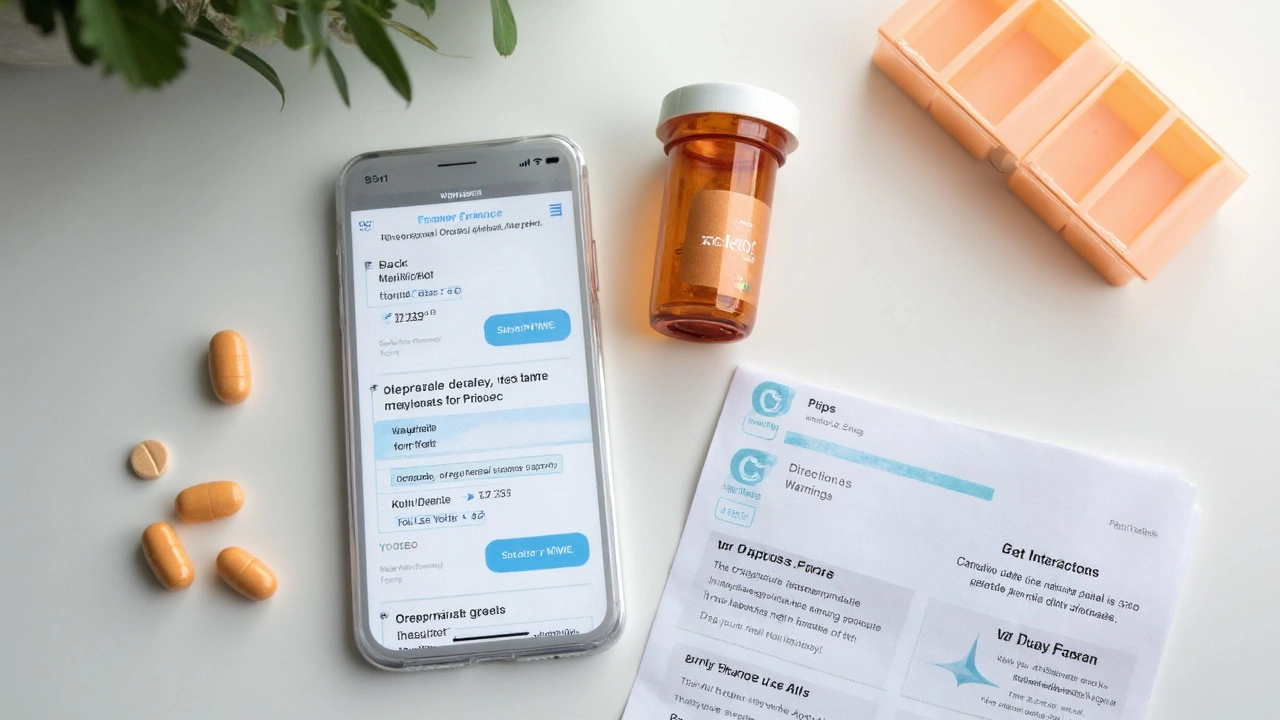
Risks, side effects, and when not to use it
Omeprazole is effective and well-studied. Still, you should know the trade-offs, especially if you’re planning more than a brief course.
Common side effects (often settle): headache, abdominal pain, nausea, diarrhea, constipation, gas.
Less common but important:
- Low magnesium with prolonged use (can cause cramps, palpitations). Blood tests may be needed if you’re on it long term.
- Vitamin B12 deficiency with long-term use.
- Increased risk of certain gut infections (e.g., C. difficile) because of lower acid.
- Kidney issues (interstitial nephritis) are rare but serious-seek help for unexplained fatigue, swelling, or sharp drop in urine.
- Fracture risk signal with very high dose/long duration in older adults.
Drug interactions to check before you buy:
- Clopidogrel: Omeprazole can reduce its activation (CYP2C19). Many clinicians prefer pantoprazole or timing strategies if you must use a PPI-ask your prescriber.
- Warfarin: Possible effect on INR-monitor if starting/stopping.
- High-dose methotrexate: Omeprazole may increase levels; avoid or coordinate timing.
- Diazepam, phenytoin: Level changes possible-monitor.
- Atazanavir, nelfinavir (HIV meds): PPIs can reduce absorption-often avoided.
- Digoxin: Levels can rise-watch for toxicity.
- Drugs needing high stomach acid for absorption (e.g., ketoconazole) may be less effective.
- St John’s wort can lower omeprazole levels via enzyme induction.
Who shouldn’t self-treat with omeprazole without a check first:
- Adults with “alarm” symptoms: trouble swallowing, unexplained weight loss, vomiting blood or black stools, chest pain, persistent cough/hoarseness, pain radiating to arm/jaw, or symptoms waking you nightly.
- People on the interaction list above.
- Those with liver disease or kidney disease-get advice on dosing and monitoring.
- Pregnancy and breastfeeding: Omeprazole has reassuring safety data and is used when needed, but confirm with your clinician or pharmacist.
- Under 18 years old for OTC products (per many labels).
Evidence and guidance references: FDA Drug Facts for omeprazole 20 mg (2024 label), Medsafe omeprazole data sheets (2024), NICE reflux/dyspepsia guidance (2023 update), and Cochrane reviews showing PPIs outperform H2 blockers for healing erosive esophagitis and maintaining symptom control.
Omeprazole vs alternatives: cost, speed, and fit
Sometimes the “cheapest” option isn’t the best once you factor speed, dosing, and your symptoms. Here’s a head-to-head view.
| Medicine | Typical OTC Dose | Onset | Best For | Watchouts | Relative Cost (per dose) |
|---|---|---|---|---|---|
| Omeprazole (generic Prilosec) | 20 mg once daily for 14 days | Starts day 1, peaks 2-4 days | Frequent heartburn, suspected reflux | CYP2C19 interactions (e.g., clopidogrel), long-term nutrient issues | Low |
| Esomeprazole (generic Nexium) | 20 mg once daily | Similar to omeprazole | Similar efficacy; some find steadier control | Similar interactions/risk profile | Low-Medium |
| Lansoprazole (generic Prevacid) | 15 mg once daily | Similar PPI profile | Comparable control; capsule granules can be opened | Same long-term issues | Low |
| Pantoprazole | Varies by region (often Rx) | Similar | Often preferred with clopidogrel | Usually prescription | Low with Rx subsidy |
| Famotidine (H2 blocker) | 10-20 mg, up to twice daily | 30-60 minutes | On-demand relief, night symptoms | Tolerance with daily use; less potent than PPIs | Very Low |
| Antacids (e.g., calcium carbonate) | As needed | Minutes | Immediate relief; breakthrough symptoms | Short-lived; calcium load/constipation | Very Low |
How to choose quickly:
- If your heartburn pops up several times a week: start omeprazole 20 mg daily for 14 days.
- If you need tonight relief: take an antacid now; consider famotidine for evenings while omeprazole ramps over a few days.
- If you’re on clopidogrel: ask about pantoprazole or a non-PPI strategy.
- If symptoms return within weeks after a full course: that’s a “talk to a clinician” moment, not a reason to keep repeating courses.
Food and habit fixes that make your PPI cheaper (because you’ll need less): stop eating 3 hours before bed, elevate the head of your bed, ease off alcohol and late coffee, and notice trigger foods (fried, tomato, mint, chocolate). Boring advice, but effective. I keep a simple notes app log for a week when symptoms spike. Patterns jump out.
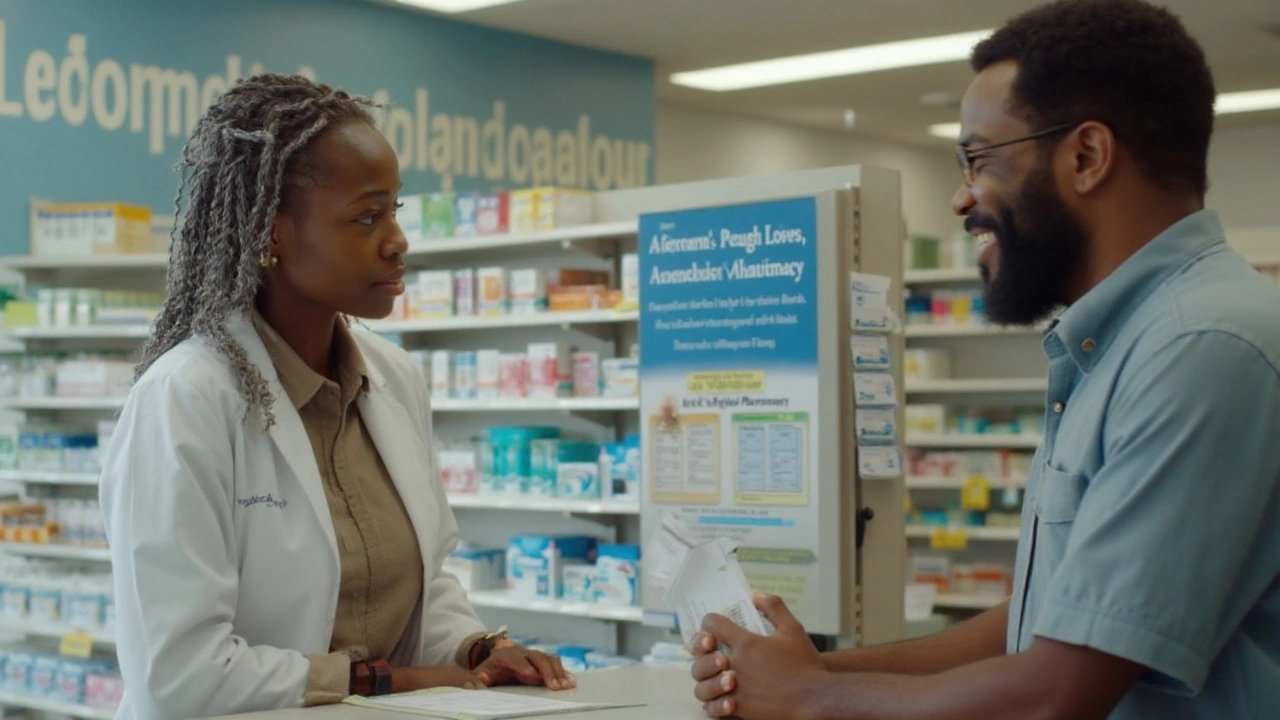
Order it the right way today: safe checkout, mini‑FAQ, and next steps
Follow this and you’ll get the right product, at a fair price, delivered on time.
Step-by-step to a safe, cheap order:
- Decide the dose and pack: Most adults start with 20 mg once daily for 14 days. If you’ll likely need another course months later, the 42-count often wins on price per dose.
- Pick the pharmacy: Choose a site with a visible license (NABP/VIPPS in US, GPhC in UK, Medsafe/Pharmacy Council in NZ). Verify the number on the regulator’s site.
- Run the symptom check: Answer the health questions fully. If alarm features apply, stop and get care.
- Check unit price: Divide total price by number of doses. Aim under US$0.50 per 20 mg dose; under US$0.30 is great.
- Add shipping math: If shipping isn’t free, divide that across doses too. A cheap pack with expensive shipping is a bad deal.
- Confirm the product: Look for “omeprazole 20 mg delayed-release,” batch/expiry, and tamper-evident packaging. Screenshots save headaches if something arrives wrong.
- Pay securely: Use a card with fraud protection or a trusted wallet. Avoid bank transfers to unknown retailers.
- Store smart: Keep in a cool, dry spot. Don’t decant into unlabelled jars; future you will thank present you.
Quick safety checklist before you click “Buy”:
- No “magic cure” claims or “no prescription needed” for prescription-only strengths.
- Clear returns and customer support hours.
- Product matches the label (dose, form, count). No translations only or blurry photos.
- Pharmacy asks reasonable health questions if pharmacist-supplied.
Mini‑FAQ
- How long until I feel better? Many feel improvement day 1; the big shift comes by day 3-4. Use an antacid for breakthrough symptoms in the meantime.
- Can I take it with coffee? Take omeprazole 30-60 minutes before a meal, ideally before breakfast. Coffee on an empty stomach can be a trigger-test your own response.
- Can I open the capsule? If it’s a capsule with enteric granules, you can sprinkle the pellets on soft food if the label allows-do not crush. Tablets usually must not be split or crushed.
- What if I miss a dose? Take it when you remember the same day. If it’s almost time for the next dose, skip the missed one-don’t double up.
- Is long-term use dangerous? Many people use PPIs long-term under medical supervision. The risks stack with dose and duration. If you’re beyond a few weeks, get reviewed. Sometimes a step-down to an H2 blocker or on-demand plan works.
- What if my chest burns and I’m over 50? New, worsening, or persistent symptoms after 50 deserve a check to rule out other causes. If it feels like pressure, spreads to the arm/jaw, or comes with shortness of breath, call emergency services.
Troubleshooting different scenarios
- Price is higher than the ranges above: Check unit price and shipping. Compare a different pack size. Look at another licensed online pharmacy or ask a local pharmacy to match.
- Shipping delayed: Contact support and ask for a reship or refund. If you need relief now, buy a small local pack and keep the online order for later.
- Symptoms not improving by day 4: Confirm you’re taking it 30-60 minutes before the same meal daily. Avoid late eating. Consider adding an evening famotidine short-term. If still stuck, get medical advice.
- Side effects: Headache or mild GI changes are common. Hydrate and stick with the same dosing time. For rash, severe diarrhea, or signs of allergy, stop and seek care.
- On clopidogrel or other interactions: Don’t self-start omeprazole. Ask about pantoprazole or a non-PPI plan.
When to escalate instead of repeating courses:
- You’ve done a correct 14-day course, symptoms quickly return, or you need courses every few months.
- You have alarm features (trouble swallowing, bleeding, weight loss, anemia, persistent vomiting).
- Night-time reflux despite proper use and lifestyle changes.
Bottom line: get a licensed source, pay a fair per-dose price, and give omeprazole a few days to do its job. The smart buy is the one that works, arrives on time, and doesn’t create new problems. If you’re in a place like Auckland, a quick chat with the local pharmacist can match online prices-and you walk out with it today.

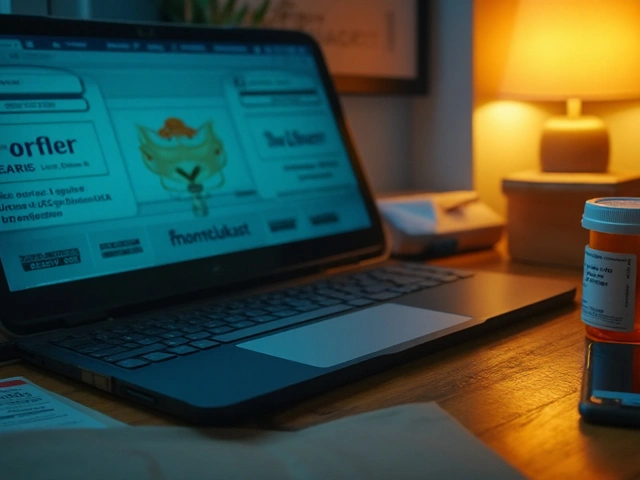
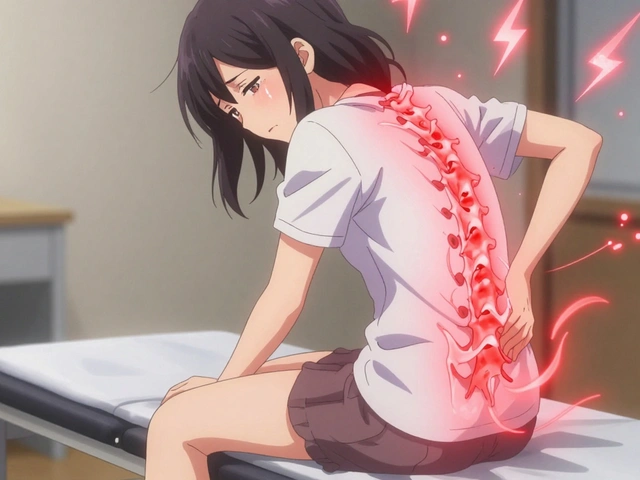


Comments (14)
Shelby Wright
Check the pharmacy license before you buy, that's the simplest, fastest safety move.
Look up the registration number on the regulator site and make sure the contact details are real and reachable. If the site hides the pharmacist or only offers sketchy chat bots, walk away. Buying a legit 14 or 42 pack from a verified outlet saves a ton of hassle later and avoids weird imports. Also, factoring shipping into the per-dose price is basic math that most people skip, and it changes the whole deal.
Ellen Laird
Price ranges listed are sensible even if the presentation is a bit showy.
I once paid for fluff-packaged meds and got sticker shock, so unit price obsession is actually practical. The typos in some online checkout flows are telling, people.
sachin shinde
First: omeprazole is not magical, it is a well-characterized benzimidazole derivative that inhibits the H+/K+ ATPase proton pump in parietal cells, and that mechanistic clarity matters when you decide on therapy.
Second: generics are pharmacokinetically equivalent within regulatory bioequivalence margins, and obsessing over color or capsule shape is aesthetic, not clinical. Those regulatory margins ensure systemic exposure is equivalent, which is the pharmacological point. Third: interactions are real and clinically relevant, clopidogrel is a textbook example due to CYP2C19 competitive metabolism and inhibition, and clinicians change PPI choices for that reason. Fourth: long-term risk signals have effect sizes that rise with cumulative exposure, and the baseline risk context of the patient must drive decisions. Fifth: magnesium depletion, B12 malabsorption, and modestly raised infection risk are not myths; they are documented signals that require monitoring plans if therapy is prolonged. Sixth: shipping integrity matters because product degradation may not be visible, and blister integrity plus batch numbers let you report problems if needed. Seventh: pricing heuristics are pragmatic but local subsidy schemes can utterly change the cost calculus, so look at subsidized dispensing if you have chronic need. Eighth: OTC availability promotes self-care but also means people normalize repeated short courses that should prompt clinical review, and that normalization is a public health blind spot. Ninth: for patients on warfarin or methotrexate, PPI initiation or cessation should trigger INR or serum drug monitoring respectively, because small metabolic effects can matter at extremes. Tenth: pantoprazole often becomes the alternative in patients needing anti-platelet therapy because of lower CYP2C19 inhibition; that is routine in some cardiology guidance. Eleventh: enteric formulation handling is not trivial, some capsules are sprinkle-friendly while tablets are not, and drug release characteristics change if you crush the coating. Twelfth: unit price and shipping math are the two things consumers can control easily, and doing that math prevents 'cheap' traps. Thirteenth: pharmacist consultation is often underused, yet a quick pharmacist chat will flag drug interactions and alarm features much faster than a search engine. Fourteenth: if a site does not display regulatory accreditation clearly and verifiably, treat it as potentially illicit and avoid cross-border imports in jurisdictions where that creates legal risk. Fifteenth: labeling that lacks batch numbers or expiry is a non-starter; it's the single packaging element that links a product to its quality control. Sixteenth: in short, buy from verifiable sources, factor shipping, watch interactions, and escalate to a clinician for recurrent or alarm symptoms, because the pharmacology and policy both back that approach.
George Embaid
Solid, clear rundown and very useful clinical pointers for everyday folks.
One additional point worth noting is that pharmacists are allies in many systems and can often save you a trip to the clinic by triaging appropriately. If your pharmacy offers a short consult, use it and keep a record of what they advise.
Shivaraj Karigoudar
Practical checklist is gold, and here's a longer, experience-based take that people actually using PPIs will find helpful.
First, lifestyle measures are not decorative; they meaningfully reduce PPI dependence when applied consistently, and tracking meals, sleep timing, and alcohol makes patterns obvious. Second, a fourteen-day OTC course can resolve many flares but recurring need is the signal of an underlying pattern that deserves diagnostic curiosity rather than repeated retail purchases. Third, there is value in documenting each course-date started, dose, symptom change timeline-because patterns predict response and rebound phenomena. Fourth, when you stop a PPI after a short course, rebound acid hypersecretion can cause a transient resurgence of symptoms and that is why having antacids or a short famotidine plan during and after the course can smooth the transition. Fifth, if you are older or on multiple meds, maintain a single medication list and show it to the pharmacist; many interactions are subtle but meaningful. Sixth, storing meds correctly is underrated-cool dry spots and avoiding heat are small behaviors that protect potency. Seventh, do not assume 'international generic' equals 'same excipients'-the active moiety is the same but coatings and inert ingredients can differ and those differences matter for people with sensitivities. Eighth, unit price per dose is where the real savings live; compare like-for-like pack sizes and factor in any loyalty rewards. Ninth, if you have to import for cost reasons, verify exporter licensing and local import rules because customs can confiscate packages and that creates both delay and loss. Tenth, if you are in a country with pharmacist-supplied PPIs, leverage that model because the pharmacist can catch alarm signs and suggest an alternate regimen that might be cheaper with equal benefit. Eleventh, when you get lab tests like magnesium or B12 checked, remember trends are more informative than single values; keep the lab reports accessible. Twelfth, for those on complex regimens like immunosuppressants or antiretrovirals, coordinate with the prescriber before starting any PPI to avoid absorption or metabolic surprises. Thirteenth, insurers and national subsidies can flip the price table overnight, so a quick call to insurance or a pharmacist about coverage options is worth the five minutes. Fourteenth, small packaging details like tamper-seal stickers and printed batch IDs are not marketing fluff, they are traceability tools that protect you. Fifteenth, if you experience neurologic symptoms, severe cramps, or marked fatigue on prolonged therapy, escalate to medical review because electrolyte or renal effects may be brewing. Sixteenth, finally, document your experience in a simple note each time you treat, because that living diary saves time and prevents repeat mistakes later on.
Joshua Brown
Nice practical tips, and a little checklist can make ordering painless.
Short checklist I use with patients: check license, verify pharmacist contact, calculate unit price with shipping, choose pack size, screenshot product page, and keep receipts. If you do those six things you cut risk massively and still save money.
andrew bigdick
Agreed with the six-step approach above and I add: keep a photo of the box and blister to your phone for quick reference and to help your clinician later.
That little habit avoids 90% of confusion when substitutions happen.
rafaat pronoy
Good tips, saved.
Leon Wood
Short, solid action is the move and documenting purchases is wise.
Also, if you get a weird batch or different-looking pills, return photos to the pharmacy and ask for a replacement or refund right away. That prevents stock confusion for others and forces the seller to respond quickly.
Meg Mackenzie
This reeks of big-pharma gatekeeping and shipping companies harvesting data and then selling it to ad networks.
Always cover your tracks, use disposable emails for online retailers, and don't give extra permissions to mobile apps that want medical data. Pharmacies recording purchase histories is one thing, but third-party trackers spamming you for reflux coupons is another level of intrusion. If they bundle data, expect targeted ads and price discrimination later. Keep receipts offline and don't accept default marketing opt-ins.
George Embaid
Privacy is a real concern and worth action, and a few practical moves help a lot.
Use incognito or a privacy-first browser for price checks, opt out of marketing where possible, and set an email filter for receipts so your main inbox doesn't become a data mine. Also, most pharmacies won't sell your health data directly to advertisers without consent, but ad trackers on retail sites are the nuisance to block, so an adblocker or tracker blocker helps reduce follow-up spam and weirdly targeted coupons.
Ellen Laird
Low-key reminder that sloppy orthography on checkout pages is a red flag for shady operations.
If the grammar is atrocious, the return policy is vague, and the contact phone number rings out, do not proceed. It is not pedantry, it's pragmatic consumer protection, and sloppy copy often indicates careless operations behind the scenes.
Shelby Wright
Also add tolerance planning: if you use PPIs frequently, plan a clinician review after a full course rather than repeating OTC buys indefinitely.
Insurance and national schemes often change the economics, so a scripted review can save money and reduce long-term risks. The cheap impulse buy is tempting but not always cheaper in the long run.
Joshua Brown
Final note: if anyone starts new meds at the same time as a PPI, log that too, because timing matters for interactions and lab interpretation.
Keep a single note that lists current meds, recent antibiotics, and any new supplements; that single file will be the most useful thing you can hand your clinician when debating interactions.